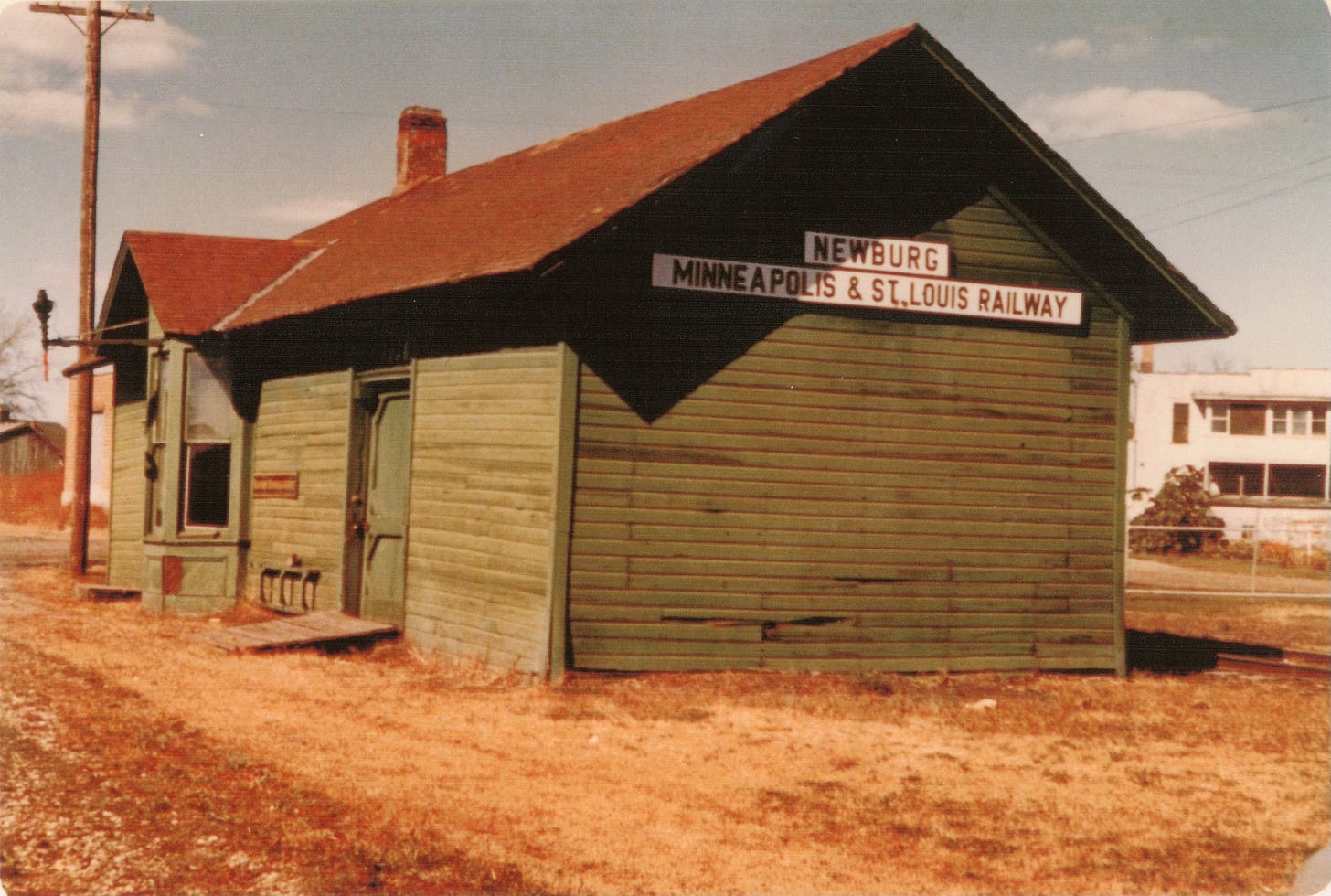
Who chose the name Newburg, and why, is a longstanding mystery. It might be that Newburg was just that—a new burg, a new town. But whoever made that decision, and why, had already passed from memory by 1929 when Verna Burroughs Paul was an eighth grader at the Newburg school. “Our 8th grade civics book asked the question, ‘How did your town get its name?’” says Mrs. Paul in “The Newburg Book”, her unpublished scrapbook of Newburg history and photographs. Since none of the students in the class knew the answer, the teacher, Grace McCarol, instructed them to find out. The only answer they discovered was that “Newburg was named for two men of the community—John Newcomer, and Mr. Hamburg, they arrived at ‘Newburg’ by taking half of each name.”1
If there was a person at the heart of the Newburg community, it was John Newcomer. A resident of Hickory Grove Township since 1867, he purchased two of the earliest lots sold in Newburg, one of which he provided for the site of the Church of God bethel. He was also involved in the founding of the Newburg Congregational Church, the Newburg bank, and the Newburg Farmers Elevator Company. The Newburg school was built on land purchased from John Newcomer, and when the brick school building that still stands in Newburg was built in 1925, he was asked to lay the cornerstone. John Newcomer was also Verna Burroughs Paul’s maternal grandfather.
In 1929, young Verna had the luxury of putting the question directly to her grandfather. She says:
“I asked my grandfather Newcomer about this theory, . . . and he weighed the question carefully. With his hands clasped behind him, he closed his eyes and thrust his chin forward in a characteristic pose as he pondered his cautious reply. ‘I am just not able to say why the town was called Newburg. I don’t recall that there was ever a family here by the name of Hamburg,’ . . . and he chuckled as he added, ‘and I am quite certain the town wasn’t named for me!’”2
End of story.
Verna Burroughs Paul continued searching for an answer to the question of how Newburg got its name for at least the next 47 years. Shirley Sisco Hartzell was Mrs. Paul’s great-aunt. She was 12 years old when Newburg was founded in 1878, and when, in 1951, Mrs. Paul asked her how Newburg got its name, she, too, spoke of her brother-in-law, John Newcomer:
“Well, I just don’t remember! I can remember when it was just bare prairie and your grandfather broke it with a team of mules and a walking plow, that whole land in there from the corner. It was Palmer land, but Uncle Johnny did breaking for other people.”3
Newburg was situated on Palmer land. Edith Palmer Sears was the granddaughter of Horace Palmer, the original owner of the land on which Newburg sits, and the daughter of Anson Palmer, who farmed his father’s land at the time of Newburg’s founding. Like Shirley Sisco Hartzell and John Newcomer, she did not remember how Newburg got its name. In 1957, she told Verna Burroughs Paul:
“I was born in 1880 so I don’t remember a time when there wasn’t a Newburg. I don’t just know how it came to be named that. Grandfather Horace bought that land in 1854, but he never lived there. Father came out when he was 21—and he was born in 1854. . . . About the naming of the town, I think there was some controversy about that. There was a Newburg back in Ohio, I think it was Ohio, now whether that had something to do with it or not I just don’t know.”4
Mrs. Paul seems to have taken Edith Palmer Sears’s hesitant answer in 1957 as confirmation of a more confident response received in a letter from Seth Buffum in 1952. Seth Buffum was three years old in 1875 when his family moved to a farm three miles southwest of the future site of Newburg, which means he was six years old when the town was founded. According to his biography in Pioneers Past & Present, “Mr. Buffum farmed, dug tile ditches, made fences, operated a ‘hack’ in Grinnell and was the first rural mail carrier out of Newburg, delivering mail with a team of horses.”5 In his letter, he said:
“Now let’s get it this way . . . all of Newburg is on land owned by Palmer and people wanted to call it Palmer but for some town where they moved from Anson Palmer named it Newburg.”6
In her scrapbook, Mrs. Paul underlined the phrase “but for some town where they moved from, Anson Palmer named it Newburg” in Seth Buffum’s letter and put a star beside it. There is a corresponding star beside Edith Palmer Sears’s underlined reference to “a Newburg back in Ohio.” At the bottom of the page, she wrote, “for a town back east where they’d once lived, Anson Palmer named the town ‘Newburg’”. But Mrs. Paul must have still been thinking about the question in 1976 when Edith Palmer Sears’s son, Dick Sears, wrote to her with a possible tone of skepticism. “As I recall the Palmers came from Northfield, Ohio that is located in Summit County,” he said. “Newburg Ohio is in Cuyahoga County and located about 12 miles north of Northfield.” For good measure, he added, “Also run across a Newcomerstown which is in Tuscarawas County and about 75 miles south of Northfield.”7
Anson Palmer died in 1926, so Verna Burroughs Paul was not able to ask him how the town got its name as she had her grandfather in 1929. It seems unlikely that Anson Palmer gave Newburg its name. Although Mrs. Paul credits him with being the person who “was instrumental in founding the town”,8 there is nothing in the historical record that suggests he was involved. It is true that his father and stepmother, Horace and Margaret Palmer, were the original owners of the land on which Newburg sits, and the Palmers might well have had a say in naming the new town. There was a Newburgh, Ohio, as Edith Palmer Sears and her son Dick suggest, roughly 12 miles northwest of where the Palmers lived at Northfield—it exists today as a suburb of Cleveland called Newburgh Heights.9 But there doesn’t seem to have been anything connecting the Palmers to that Newburgh, and there is nothing to suggest why they would want to name a town in Iowa after it.
In her “Newburg Book”, Verna Burroughs Paul offers one last account of how Newburg got its name. “I’ve especially included this,” she says, “to represent the many different and sincere versions that I’ve had from old-timers.”10 Belle Sisco Fay was 20 years old in 1878 when she married Ed Fay. By September 1879, they had put up a building housing a general store with a second floor residence on Clay Street in Newburg.11 She was an older sister of Shirley Sisco Hartzell and another of Verna Burroughs Paul’s great-aunts. She was 92 years old in March 1951 when she told Mrs. Paul:
“I was married in 1878, there was no Newburg at that time. About 2 years later it was named Newburg. There was one store, the post office and depot. Charley Morris and Gene Taylor named the town. Mr. Taylor wanted to call it Palmer and Mr. Morris wanted to name it Newcomer. Your grandfather didn’t want it named for him, so Mr. Morris said, “Why not call it Newburg?”, so it seems that’s how it was settled.”12
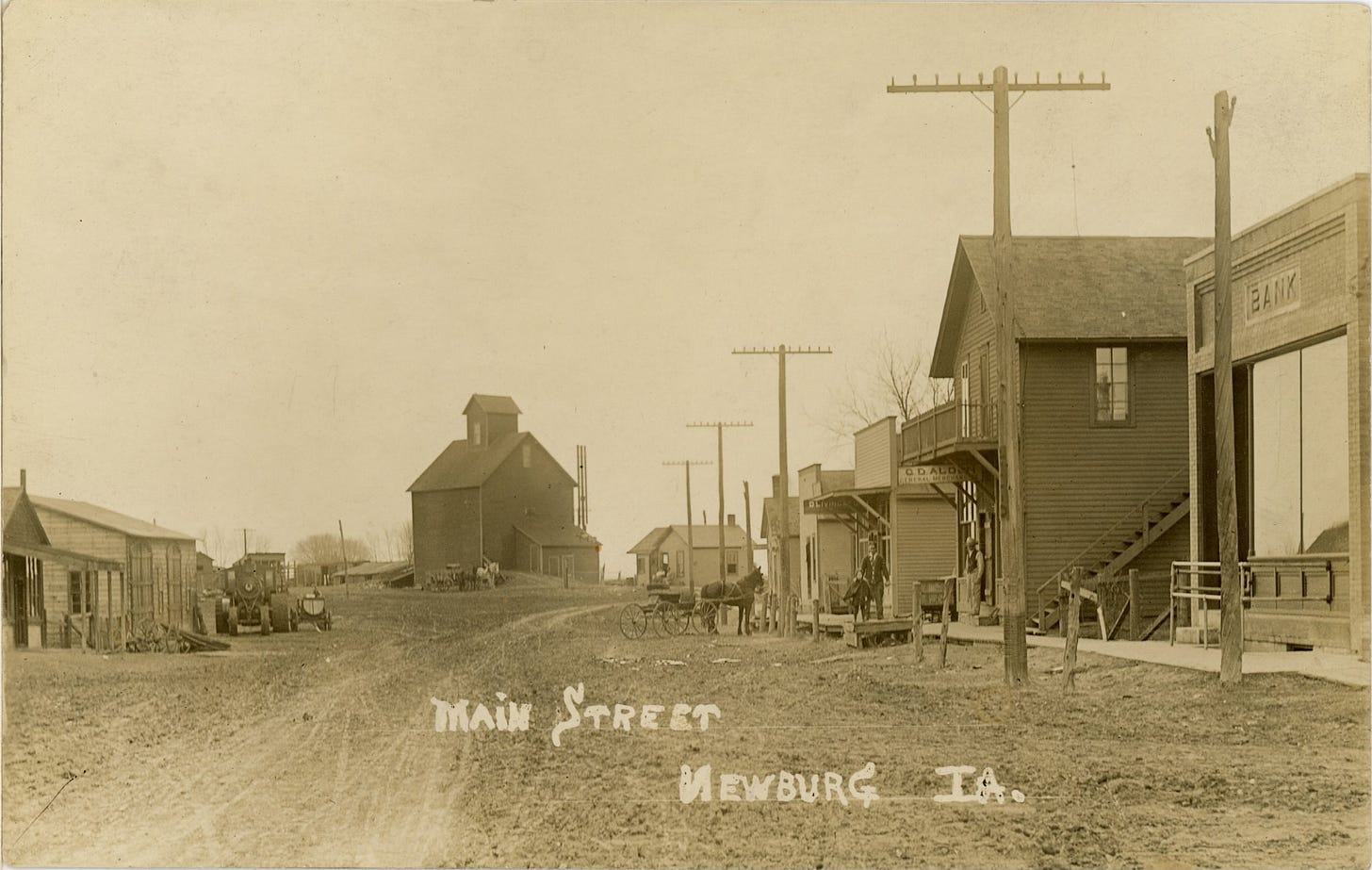
Mrs. Paul was disappointed in Belle Sisco Fay’s account of the naming of Newburg. She says:
“My great aunt SHOULD have been a good witness; her husband, Ed Fay, had one of the very first stores, and her daughter Myrtle is said to have been the first child born in Newburg. But I’m sure she is wrong on all three counts: 1) When it was founded, 2) Who named the town, and 3) That it was named for John Newcomer.”
But Belle Sisco Fay WAS a good witness. In fairness to her, she did not say Newburg was named for John Newcomer. She said John Newcomer did not want the town named for him, so it was named Newburg instead. Mrs. Paul seems to interpret her great-aunt as meaning the “new” in Newburg was a tip of the hat to the “new” in Newcomer. She wasn’t saying that.13 Again in defense of Belle Sisco Fay, the plat of Newburg was filed at the Jasper County Recorder’s Office on 25 September 1878. If Belle Sisco and Ed Fay were married before that date, then there was no Newburg when they got married in 1878, and even if they were married later in 1878, there wasn’t much of a Newburg there physically. She is wrong about the town being named “about two years later”. Newburg had its name before it had a building or inhabitant. When, in its 20 August 1878 issue, the Grinnell Herald announced that work had begun on a new railroad station six and half miles north of Grinnell, it said, “The new station is to be called Newberg”.14 These are quibbles.
Of greatest interest is that Belle Sisco Fay sounds sure of herself when she says, “Charley Morris and Gene Taylor named the town.” Verna Burroughs Paul is sure her great-aunt is wrong. But who the heck were Charley Morris and Gene Taylor? In Pioneers Past & Present, the book put out for Newburg’s centennial celebration in 1978, Gene Taylor’s name appears in this quote from Belle Sisco Fay and one other time, as “E.H. Taylor,” in a list of Newburg’s postmasters and postmistresses.15 Eugene Taylor was Newburg’s first postmaster, a position he held until 1880 when he left Newburg to go to Chicago in pursuit of a career as an architect.16 It’s interesting that Belle Sisco Fay refers to him familiarly as “Gene.” She would have known him. In the street scene pictured above, the post office is the building three doors south of the Fay store and residence. The name Charley Morris also appears one other time in Pioneers Past & Present, in a list of elevators, owners, and managers. The entry is taken from Mrs. Paul’s “Newburg Book”, which says, “CHARLEY MORRIS built first elevator. Lived in Grinnell. First elevator built about 1882.”17 “Charley Morris” is mentioned again in Pioneers Past & Present, but not as Charley Morris. “Charley Morris” is the misremembered, or mis-transcribed, name of Charles Morse, occasionally referred to in the newspapers familiarly as Charley. On page 3 of Pioneers Past & Present, there is a picture of a warranty deed with the names “Horace H. Palmer and Wife, Charles R. Morse and Wife, Gustavus A. Whitney and Wife” printed on it. In the text on that page, it says, “From the Warranty Deed, we see that it was not left up to the Palmer family to do the legal work. Two men from Grinnell, Iowa, Morse and Whitney are named on the Deed as owning the property along with the Palmers of Summit County, Ohio.”18 Other than noting that in the 1879 Assessor’s Book, “96 lots were listed as belonging to Morse, Whitney & Palmer, in whose names the deeds for the Newburg property were first listed", that’s all that Pioneers Past & Present says about Charles Morse, Gene Taylor, and Gus Whitney, whose name appears nowhere else in the book.19
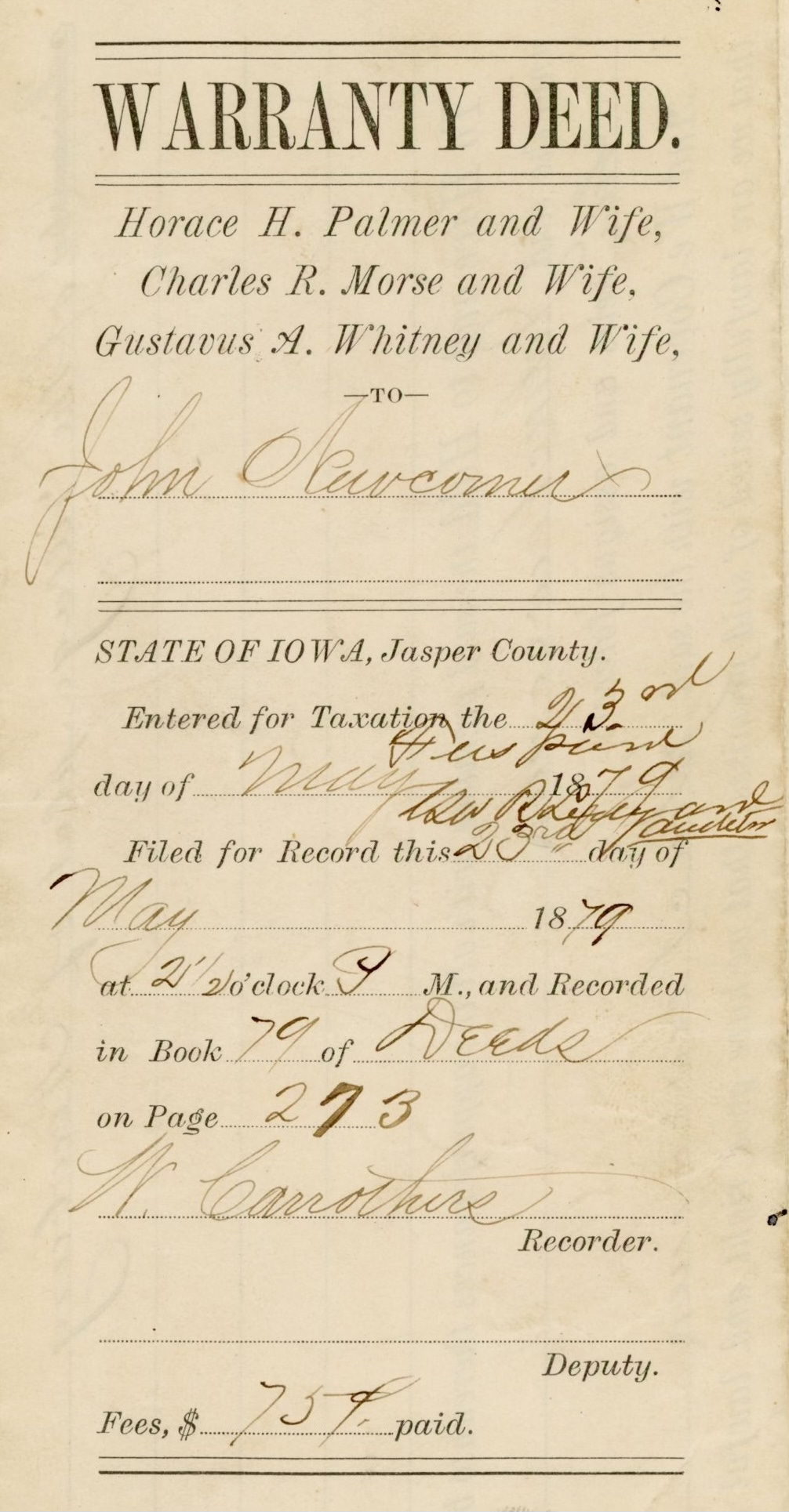
By 1978 when its centennial was celebrated, and probably by as early as 1929, Newburg had not only forgotten the source of its name, but also the people who founded it. Charles Morse, along with Gustavus Whitney, did own the first grain business in Newburg. Rather than being called the “Charley Morris Elevator”, it was called “Morse & Whitney,” and it wasn’t just the first grain business in Newburg, it was the reason Newburg was founded.20 The Grinnell Herald reported on 30 August 1878 that:
“Morse & Whitney began the grain trade at the new town of Newberg yesterday morning and Mr. Whitney informs us that this evening they shall ship eight car loads. Pretty well for the first two days trade in a town with only a switch and a warehouse.”
The warehouse, of course, belonged to Morse & Whitney, as did a half interest in all the town lots, and by the time the Herald’s correspondent toured Newburg a year later, they owned two large grain houses, the post office, the express office, and a lumber yard. “This place,” said the Herald, “was laid out about one year ago, by Messrs. Morse & Whitney.” It was Morse & Whitney that advertised for sale the Newburg town lots.
That Newburg might have forgotten the people involved in its founding by 1929 isn’t entirely surprising. None of them but Eugene Taylor ever lived in Newburg. Horace Palmer died within two years of Newburg’s founding, in August 1880. His memory had the benefit of a son, Anson, and grandchildren who went on to become active and respected members of the Newburg community. Eugene Taylor, as has been said, left Newburg for Chicago in 1880. Just three years after Newburg’s founding, in 1881, Gus Whitney, the junior partner in Morse & Whitney, sold his interest in the grain firm and his share in the Newburg town lots to his partner, Charles Morse, and moved to Waterloo, Iowa. Charles Morse sold his interest in the town lots, and likely the Newburg grain business, to Nathaniel W. Cox and John Planalp in March 1882. Morse lived the rest of his life in Grinnell. Within four years of its founding, the people who had given Newburg its start were gone.
But what about the name? Why Newburg? Well . . . Belle Sisco Fay’s memory that Charles Morse named Newburg seems reasonable. He was the senior partner in Morse & Whitney, and it was Morse & Whitney that “laid out” the town. That Gene Taylor had a say in naming the town seems reasonable too. Eugene Taylor was not only Newburg’s first postmaster, he worked for Morse & Whitney. He was Morse & Whitney’s grain buyer at Newburg, and according to Dorothy Pinder, was Newburg’s first inhabitant.21 He was also the surveyor who surveyed the plat of the new town, and he would have needed a name to write at the top of the document. Gus Whitney, the junior partner in Morse & Whitney, was married to Eugene Taylor’s sister.
Gus Whitney surely took part in conversations about what to call the new town he was planning with his partner, Charles Morse, and the surveyor, Eugene Taylor. And whether he suggested it himself, or whether his brother-in-law, Eugene Taylor, suggested it, or whether his senior partner came up with it on his own, a smile must have appeared on the junior partner in Morse & Whitney’s face when, as Belle Sisco Fay remembered, Charles Morse said, “Why not call it Newburg?” The answer to the question Verna Burroughs Paul’s 8th grade civics book asked in 1929, “How did your town get its name?”, was this: Gus Whitney was one of Newburg’s founders and Gus Whitney was born and raised in Newburgh, Penobscot County, Maine.22
Paul, Verna Burroughs. “How did Newburg get its name?” In “The Newburg Book,” Mrs. Paul’s unpublished scrapbook of Newburg history and photographs. Some of the material appears in Pioneers Past & Present, eds. Adams, Mrs. Kenneth, Mrs. Ed Breeden, Mrs. Gail Cook, and Mrs. Marvin Emmert. 1978. p. 5., but Mrs. Paul’s scrapbook is clearly the source.
Ibid. From a conversation with Mrs. Paul’s grandfather, John Newcomer, in 1929.
Ibid. From a conversation with Shirley Sisco Hartzell in 1951.
Ibid. From a conversation with Edith Palmer Sears in June 1957.
Pioneers Past & Present. p. 76.
From the original letter in “The Newburg Book”.
From the original letter in “The Newburg Book”. It’s true. There is a Newcomerstown, Ohio: https://en.wikipedia.org/wiki/Newcomerstown,_Ohio.
“The Newburg Book” and Pioneers Past & Present. p. 3. The entry in Pioneers Past & Present is taken verbatim from Verna Burroughs Paul’s scrapbook.
For a history of Newburgh, Ohio, see: https://case.edu/ech/articles/n/newburgh-township.
“The Newburg Book”.
“Newburg”, Grinnell Herald, 04 September 1879, p. 3.
“The Newburg Book”. From a conversation with Belle Sisco Fay in March 1951. Also, Pioneers Past & Present. p. 5.
I admit discomfort at taking issue with Verna Burroughs Paul. If it were not for her, much, if not most, of Newburg’s history would be lost. We owe her a debt for her love of Newburg. On a personal level, she was my aunt Jackie’s mother and my cousins’ maternal grandmother. Mrs. Paul was also my kindergarten teacher. My first week of kindergarten, a shy boy, I stood beside her at recess while the other children played. There’s risk in raising one’s hand to tell the teacher she’s wrong.
“Local Matters”, Grinnell Herald, 20 August 1878, p. 3.
Pioneers Past & Present. p. 6.
Pinder, Dorothy. In Old Grinnell. Herald-Register Publishing Company. Grinnell, Iowa. 1995. p. 58.
Pioneers Past & Present. p. 15, and “The Newburg Book”. From notes made by Charley Newcomer when visiting with Belle Sisco Fay in about 1950.
Pioneers Past & Present. p. 3. The text is verbatim from “The Newburg Book”, which also contains the original warranty deed."
This is not meant to fault Pioneers Past & Present or the people who created it. Pioneers Past & Present is primarily a remembered history, and as such it is an invaluable resource and starting point for researching Newburg’s history. In 1978, the internet did not exist, and the people who put hours into creating this book did not have the online access to property records, newspapers, and genealogical data that we take for granted today.
To read about the founding of Newburg, see my Newburg Story “A town with only a switch and a warehouse”: https://jharleymcilrath.substack.com/p/a-town-with-only-a-switch-and-a-warehouse.
In Old Grinnell. p. 58.
1850 United States Federal Census. [www.ancestry.com/family-tree/person/tree/193190243/person/432526109697/facts].




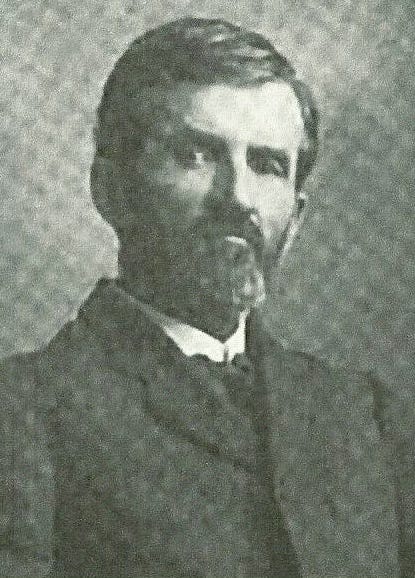
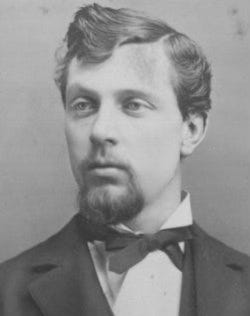
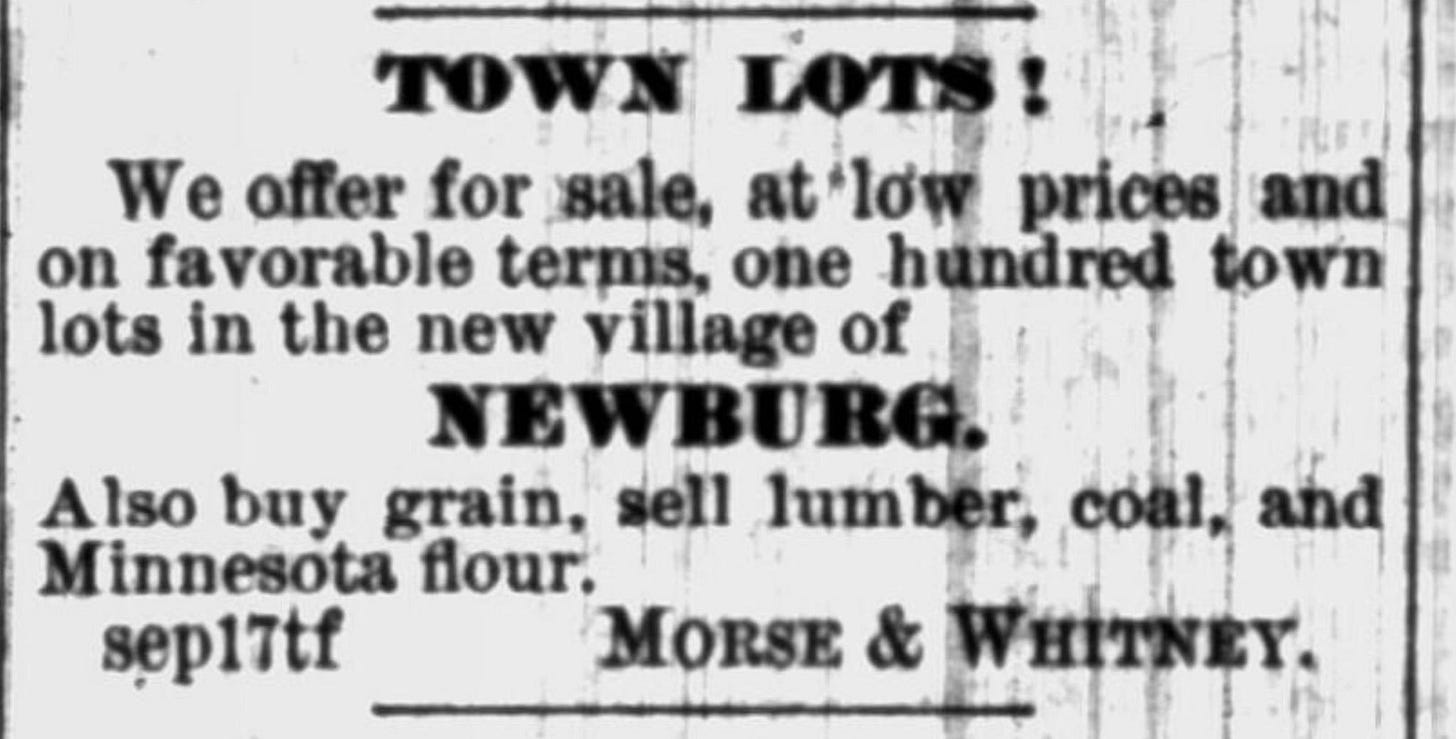
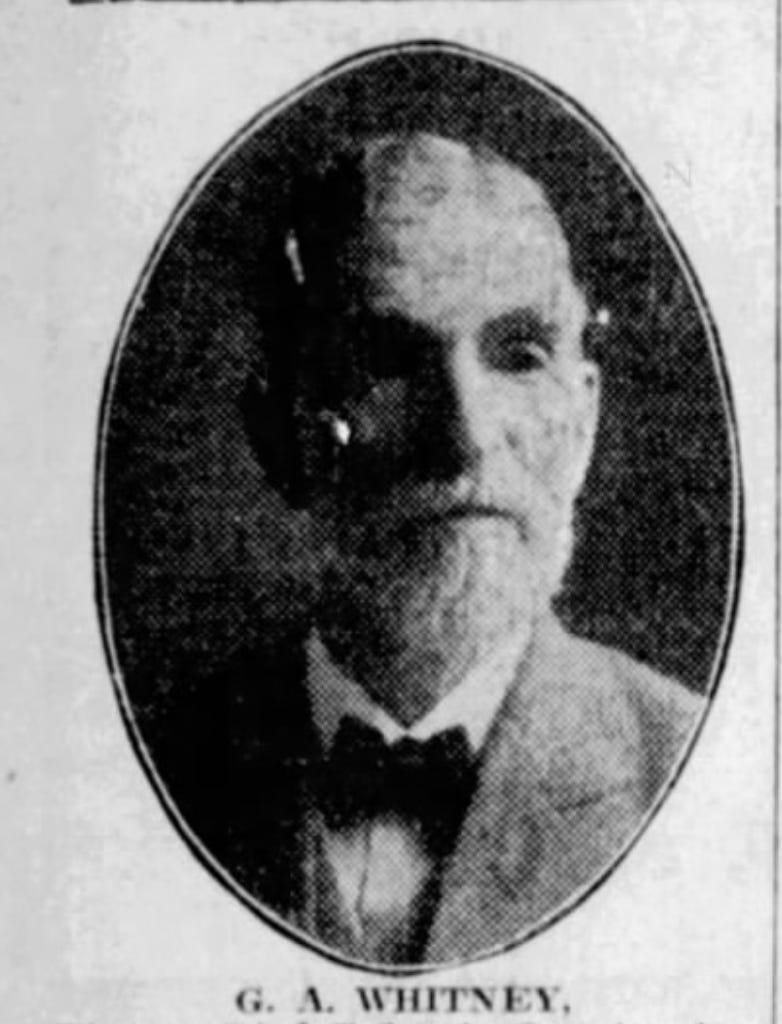
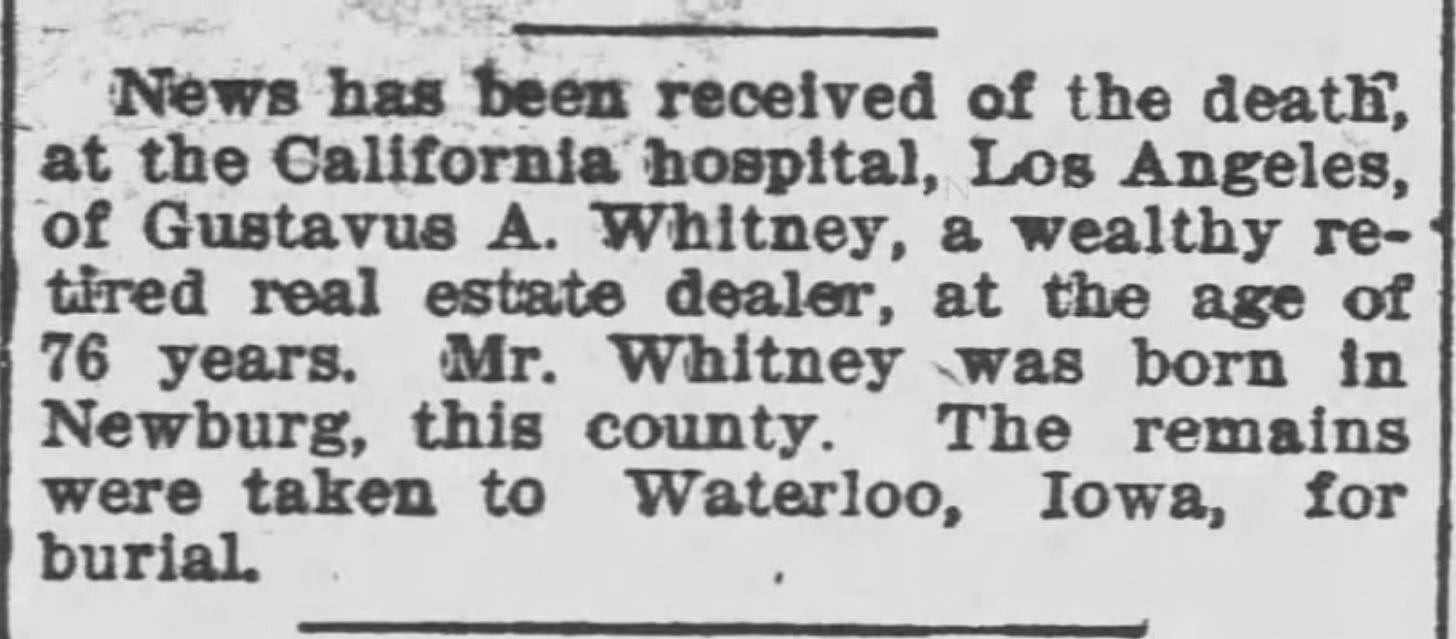
So interesting. And timely! I’m meeting with someone Saturday morning at the Palmer House Museum in Northfield, Ohio and will share this charming piece with them… especially about the possible connection to Newburgh, Ohio.